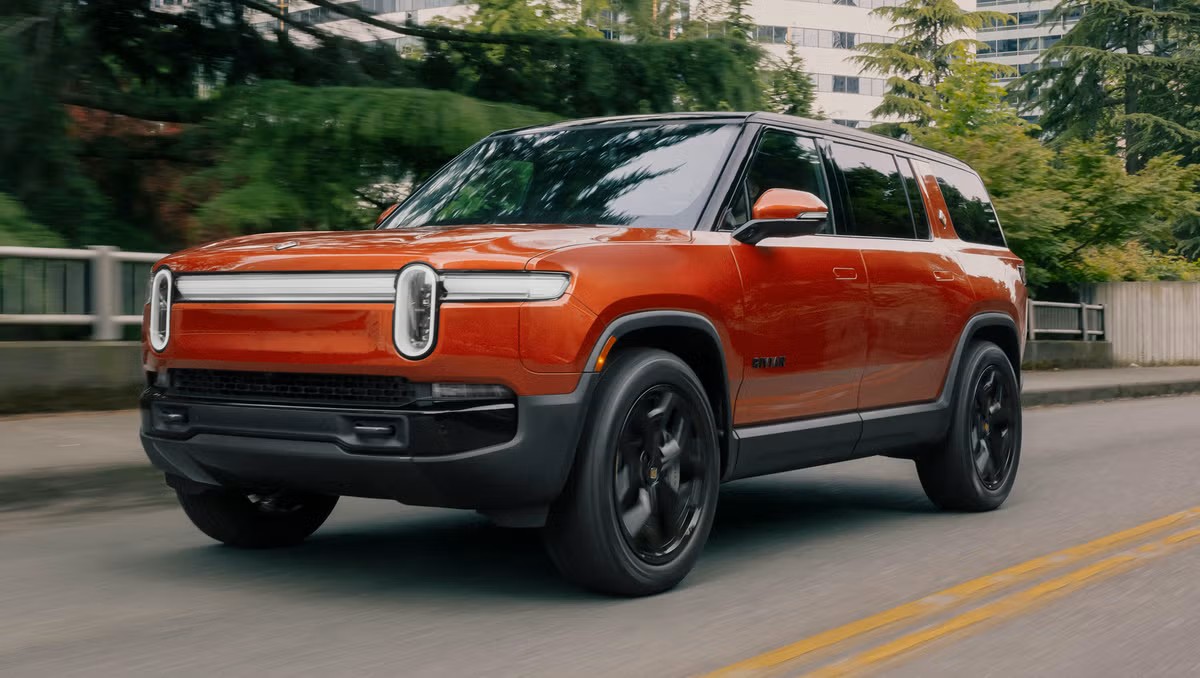The electric vehicle market in 2025 presents a fascinating dichotomy between two distinct philosophies: maximizing utility through expansive storage solutions and embracing minimalist functionality through bare-bones designs.
As consumers increasingly prioritize sustainability without compromising practicality, automakers have responded by developing electric vehicles (EVs) that excel in specific areas rather than attempting to be all things to everyone.
On one end of the spectrum, we find electric vehicles designed as ultimate haulers and family transporters, featuring cavernous cargo areas that rival traditional SUVs and vans.
These storage-focused EVs recognize that consumers need space for everything from weekly grocery runs to cross-country moving adventures, all while maintaining zero emissions.
Advanced packaging techniques, innovative use of front trunks (“frunks”), and clever interior configurations have allowed manufacturers to maximize every cubic inch of available space.
Conversely, the bare-bones EV movement represents a counter-narrative to the industry’s tendency toward feature inflation and technological complexity.
These vehicles strip away non-essential amenities, focusing purely on efficient electric transportation at accessible price points. By eliminating touchscreens, premium materials, and advanced driver assistance systems, manufacturers can offer electric mobility to broader market segments while maintaining profitability.
This comprehensive analysis examines ten vehicles that exemplify these contrasting approaches, providing detailed insights into the engineering decisions, market positioning, and consumer benefits that define each category in today’s rapidly evolving electric vehicle landscape.
5 Electric Vehicles with Maximum Interior Storage
These thoughtfully designed electric vehicles maximize interior storage through innovative packaging solutions that take advantage of electric powertrains’ space-saving benefits.
The electric SUV with the most maximum cargo space (when all seats are folded) is the Rivian R1S with 104.7 cubic feet of volume. Behind the R1S in most cargo space is the Tesla Model X with a max cargo volume of 92.3 cubic feet.
Multiple storage compartments, including deep door bins and a sliding centre console, provide practical solutions for everyday items. These vehicles feature dedicated front trunks (frunks) that provide additional storage space previously occupied by internal combustion engines, along with cleverly designed center consoles that house charging cables and daily essentials.
The absence of traditional drivetrain components allows designers to create ingenious storage solutions throughout the cabin, including underfloor compartments, enlarged door pockets, and multi-level cargo areas.
Many models incorporate sliding center consoles, configurable cargo floors, and hidden storage areas that maximize utility while maintaining clean interior aesthetics.
1. Tesla Model X – The Falcon-Wing Storage Champion
The Tesla Model X stands as the undisputed leader in electric vehicle cargo capacity, offering an impressive maximum storage volume that redefines expectations for luxury electric SUVs.
The Model X offers 85.1 cubic feet when the 2nd-row seats are folded, establishing itself as a true cargo hauler despite its premium positioning. The Model X’s storage superiority stems from several innovative design decisions that maximize every available inch.
The vehicle’s distinctive falcon-wing doors, while primarily designed for dramatic effect and easier passenger access, also contribute to improved cargo loading capabilities.
These doors open upward rather than outward, allowing users to load tall items without worrying about door clearance in tight parking spaces. The front trunk, or “frunk”, offers 6.5 cubic feet of additional space, bringing the total theoretical storage capacity to over 91 cubic feet when combining all available areas.
This front storage compartment proves particularly valuable for storing items that need to remain separate from the main cargo area, such as charging cables, tools, or temperature-sensitive goods.
The interior packaging of the Model X demonstrates Tesla’s commitment to space efficiency. The vehicle can be configured as a five, six, or seven-seater, with the five-seat configuration offering the maximum cargo space behind the second row.
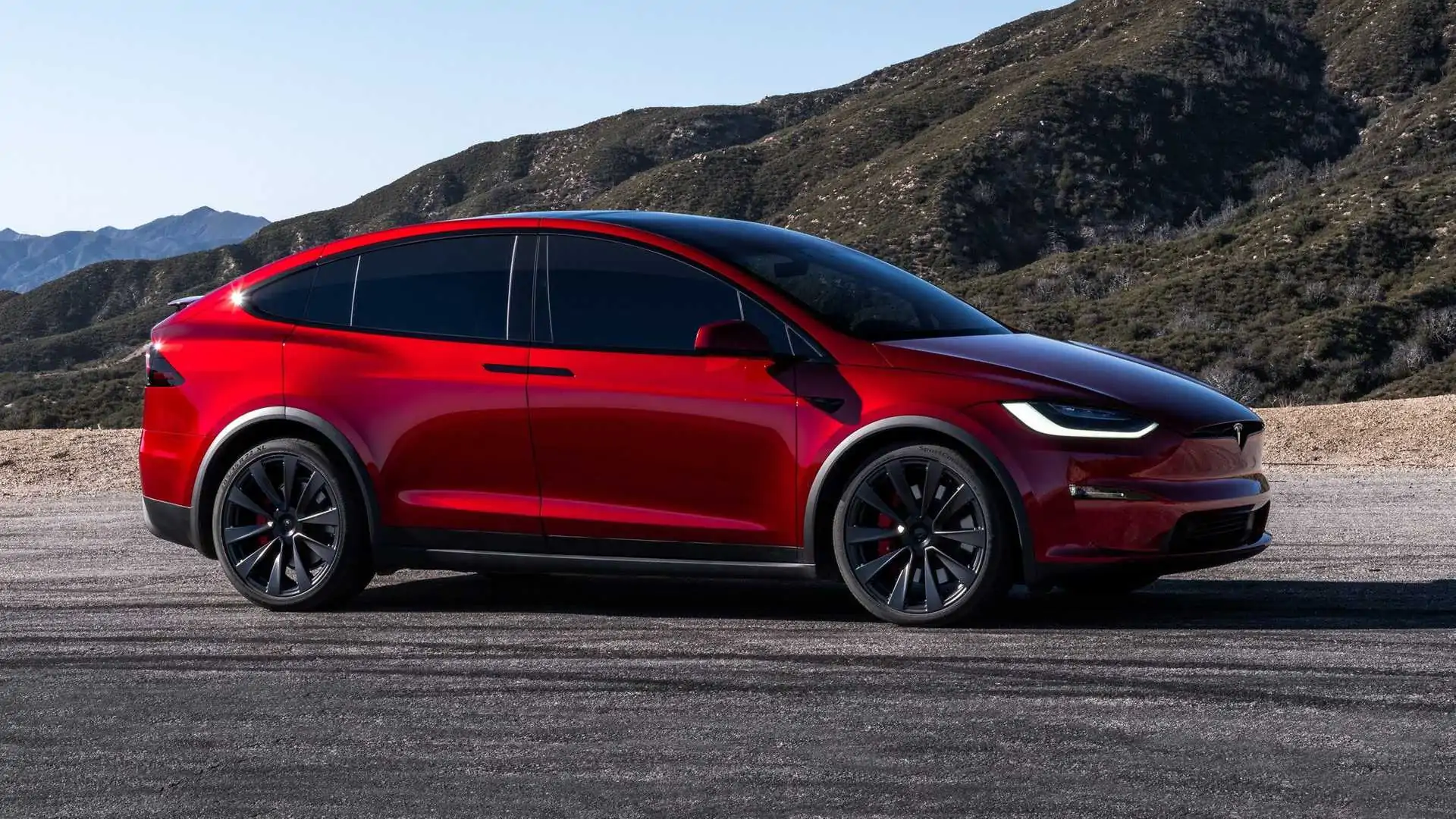
The second-row seats fold completely flat, creating a continuous cargo floor that extends from the rear tailgate to the back of the front seats. This configuration proves invaluable for transporting large items like furniture, sporting equipment, or camping gear.
Beyond raw cubic footage, the Model X excels in cargo versatility. The rear cargo area features a flat loading floor with tie-down points and cargo nets to secure items during transport.
The wide tailgate opening and low lift-over height make loading heavy items manageable without assistance. Additionally, the electric tailgate can be programmed to open to specific heights, accommodating various garage ceiling heights while maintaining convenience.
The Model X’s towing capacity of up to 5,000 pounds further enhances its utility credentials. When combined with its substantial interior storage, this capability makes it suitable for recreational activities requiring both passenger comfort and significant cargo hauling.
The vehicle’s advanced towing features include trailer stability assist and integrated trailer brake controllers, making it a comprehensive solution for active families.
Climate control throughout the cargo area ensures that transported items remain at appropriate temperatures, while multiple 12V outlets provide power for equipment or devices.
The Model X’s storage solutions represent a holistic approach to utility, considering not just volume but also accessibility, security, and environmental control.
2. Lucid Air Dream Edition – Luxury Sedan Storage Redefined
The electric car with the most maximum cargo space (when all seats are folded) is the Lucid Air with 64.8 cubic feet of volume, challenging traditional assumptions about sedan storage capabilities.
This remarkable achievement demonstrates how dedicated electric vehicle architecture can revolutionize interior packaging, even in the traditionally space-constrained sedan segment.
The Lucid Air’s exceptional storage capacity results from its ground-up electric design philosophy. Without the constraints of a traditional internal combustion engine, transmission tunnel, or exhaust system, Lucid’s engineers could reimagine interior space allocation entirely.
The vehicle’s advanced battery packaging, integrated into a structural skateboard platform, maximizes cabin volume while maintaining optimal weight distribution and structural integrity.
The rear cargo compartment alone offers approximately 32 cubic feet of storage, exceptional for a luxury sedan and comparable to many compact SUVs.
This space features a wide opening and low load floor, making it practical for everything from airport luggage to weekend getaway gear. The cargo area includes multiple tie-down points, a 12V outlet, and optional cargo organizers to maximize utility. The Air’s front trunk contributes significantly to total storage capacity, offering one of the largest frunk spaces in the sedan category.
This forward storage compartment proves particularly valuable for items requiring separation from the main cargo area or for maintaining cabin climate isolation. The frunk includes weatherproof sealing and drainage, ensuring stored items remain protected regardless of driving conditions.
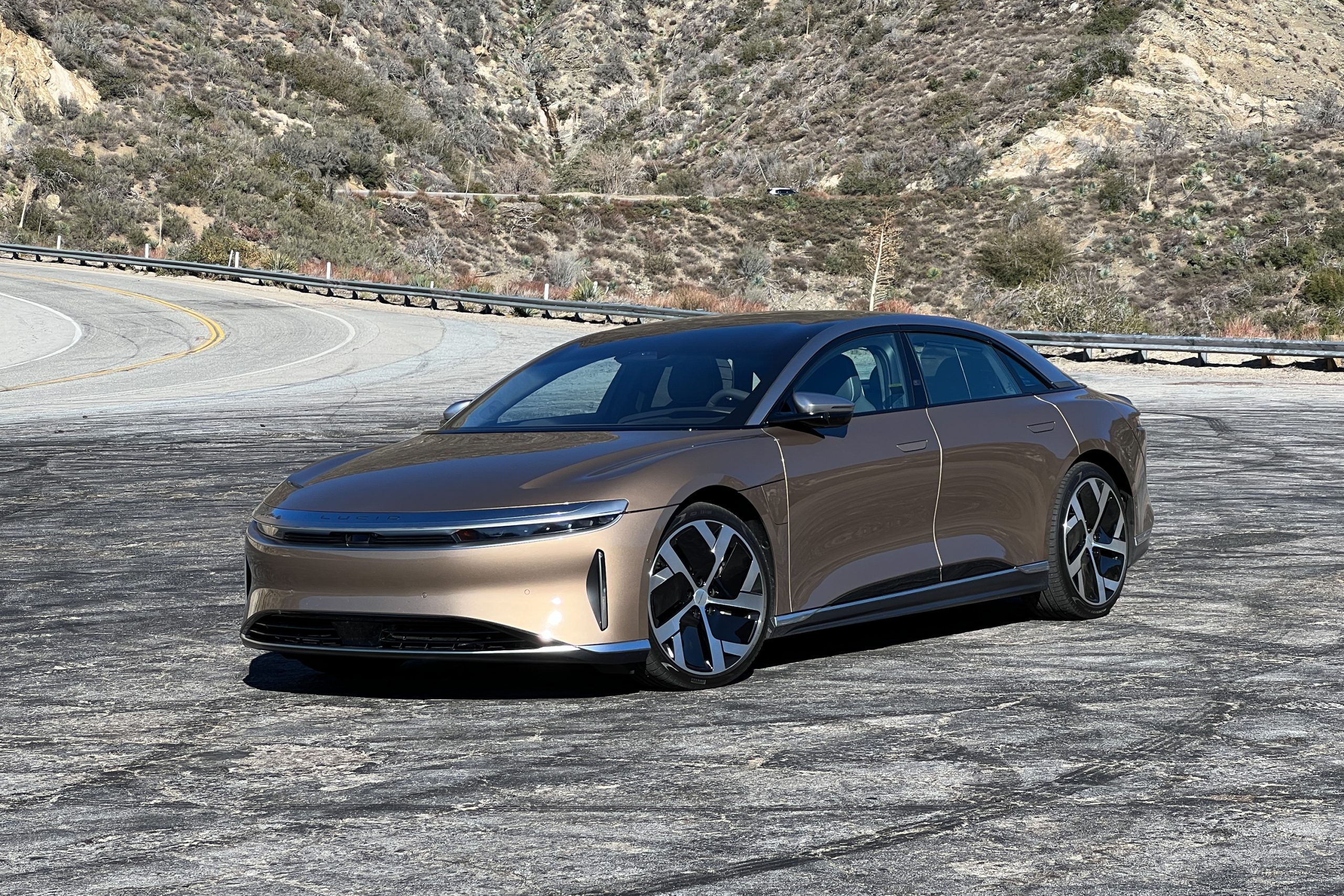
When rear seats fold down, the Air creates an expansive cargo tunnel extending from the tailgate to behind the front seats. This configuration enables transport of surprisingly long items, from lumber for home projects to sporting equipment like skis or surfboards.
The seat-folding mechanism operates smoothly and creates a nearly flat cargo floor, maximizing usable space. Interior storage throughout the cabin further enhances the Air’s utility credentials.
Large door pockets, a spacious center console with multiple compartments, and innovative storage solutions in the dashboard area provide numerous options for smaller items.
The vehicle’s “Glass Canopy” roof design maximizes headroom without compromising structural integrity, creating an airy cabin feel that complements the generous storage capacity.
Advanced materials and construction techniques allow the Air to achieve this storage capacity without compromising luxury amenities or safety performance.
The vehicle maintains its premium positioning through high-quality interior materials, advanced technology integration, and exceptional build quality, proving that maximum storage doesn’t require sacrificing refinement.
The Air’s storage solutions extend beyond simple volume measurements to include thoughtful details like adjustable cargo floor heights, integrated lighting throughout storage areas, and smart storage compartments that can be configured for specific item types. These features demonstrate Lucid’s attention to real-world usability rather than simply maximizing cubic foot measurements.
3. BMW iX – German Engineering Meets Maximum Utility
The BMW iX represents the pinnacle of German engineering applied to electric utility vehicles, combining traditional BMW luxury with exceptional cargo capacity.
This flagship electric SUV offers approximately 77.9 cubic feet of maximum cargo space, positioning it among the most capacious luxury electric vehicles available in 2025.
BMW’s approach to maximizing storage in the iX centers on intelligent space utilization and flexible interior configurations. The vehicle’s eDrive technology platform, developed specifically for electric vehicles, allows optimal battery placement that doesn’t compromise interior volume.
The flat battery pack creates a low, flat cargo floor while maintaining the ground clearance necessary for SUV capability. The iX’s rear cargo area provides 35.5 cubic feet behind the second row, expandable to the full 77.9 cubic feet when rear seats fold flat.
The cargo area features BMW’s signature attention to functionality, including adjustable floor panels that create hidden storage compartments below the main cargo level.
These sub-floor storage areas prove valuable for storing charging cables, emergency equipment, or items requiring security separation. Power-operated tailgate with programmable height settings accommodates various loading scenarios and garage limitations.
The wide tailgate opening and squared-off cargo area maximize usable space, while integrated LED lighting ensures visibility during loading operations regardless of ambient lighting conditions. Cargo management systems include adjustable dividers, tie-down points, and optional rail systems for securing various load types.
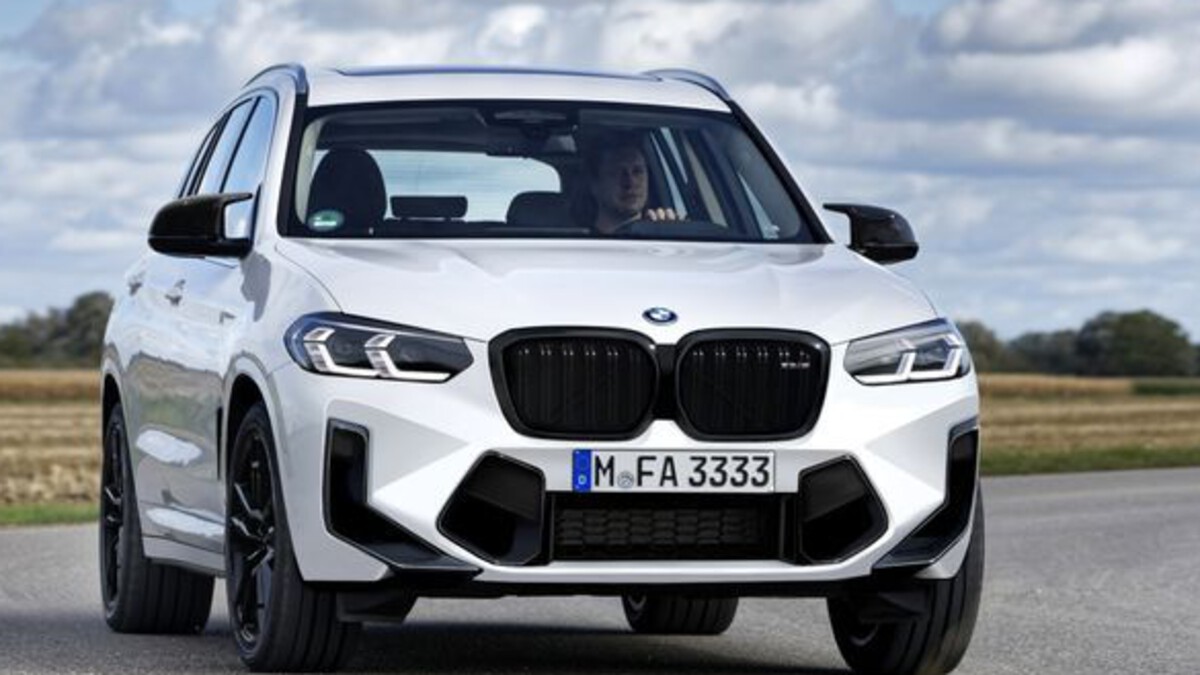
The iX’s front storage compartment, while smaller than some competitors at approximately 3.5 cubic feet, provides weatherproof storage for frequently accessed items.
BMW engineers optimized this space for European driving conditions, where frunk usage patterns differ from American markets. The compartment includes 12V power and USB connections for device charging or small equipment operation.
Interior cabin storage throughout the iX demonstrates BMW’s commitment to practical luxury. The center console provides substantial storage volume with felt-lined compartments for delicate items.
Door panels feature multiple storage areas sized for various items, from water bottles to tablets. The dashboard incorporates numerous cubby holes and wireless charging areas that maintain clean interior aesthetics while maximizing functionality.
Advanced packaging techniques allow the iX to maintain its luxury appointments while achieving maximum storage capacity. Premium materials, including sustainable alternatives like recycled ocean plastic and responsibly sourced wood, create an upscale environment without compromising space efficiency.
The vehicle’s minimalist interior design philosophy reduces visual clutter while providing maximum functional storage. BMW’s xDrive all-wheel-drive system integration doesn’t compromise cargo space, as the electric motors and power electronics are packaged efficiently within the vehicle’s architecture.
This approach maintains BMW’s traditional driving dynamics while providing the utility expected from a flagship electric SUV. The iX’s towing capacity of up to 5,291 pounds, combined with its substantial interior storage, creates a comprehensive utility package suitable for luxury buyers who refuse to compromise on capability.
Advanced trailer assist systems and integrated trailer brake controllers ensure safe operation when fully loaded with both passengers and cargo.
4. Ford Mustang Mach-E – American Performance Meets Practical Storage
The Ford Mustang Mach-E features a rear trunk with 29.7 cubic feet of storage capacity. The “frunk” contributes an additional 4.7 cubic feet of space, making it the largest frunk in its class.
When rear seats fold down, the available cargo area expands to approximately 59.7 cubic feet, establishing the Mach-E as a performance-oriented electric SUV that doesn’t sacrifice practicality.
Ford’s approach to storage in the Mach-E reflects American preferences for versatility and utility, even in performance-oriented vehicles. The vehicle’s electric architecture, built on Ford’s Global Electric Architecture platform, optimizes interior space while maintaining the sporty proportions that honor the Mustang heritage.
The Mach-E’s rear cargo area provides generous space for daily use while maintaining the vehicle’s sleek exterior profile. The cargo floor sits relatively low, reducing lift-over height and making loading easier for users of various heights.
Ford engineers designed the space with active families in mind, incorporating features like grocery bag hooks, tie-down points, and optional cargo organizers that adapt to different hauling needs.
The standout feature of the Mach-E’s storage solution is its exceptionally large front trunk. The “frunk” contributes an additional 4.7 cubic feet of space, making it the largest frunk in its class, providing more forward storage than many competitors.
This space proves invaluable for items requiring separation from the main cargo area, such as wet sports equipment, dirty camping gear, or temperature-sensitive groceries.
Ford designed the frunk with drainage capabilities, allowing users to fill it with ice for tailgating or camping applications. This unique feature transforms the storage compartment into a cooler when needed, demonstrating innovative thinking about multi-purpose functionality.
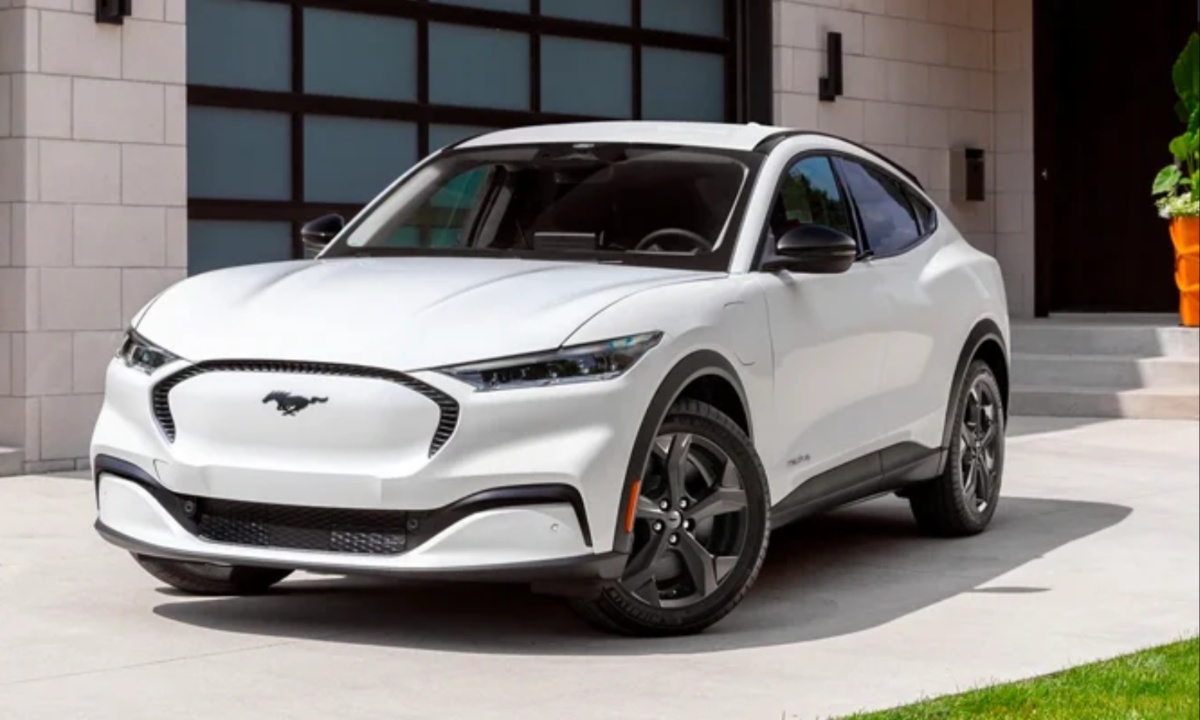
The frunk also includes 12V power outlets and USB connections, enabling various equipment uses beyond simple storage. Interior cabin storage throughout the Mach-E emphasizes practicality and accessibility.
The center console provides substantial volume with multiple compartments sized for modern device storage. Wireless charging pads integrated into the console keep devices powered while maintaining clean interior aesthetics. Door panels feature large bottle holders and additional storage pockets designed for American-sized beverages and snacks.
The Mach-E’s seat-folding mechanism creates a nearly flat cargo floor when rear seats are lowered, maximizing usable space for long items. This configuration proves particularly valuable for outdoor enthusiasts who need to transport equipment like skis, fishing rods, or camping gear.
The continuous cargo floor extends from the tailgate to behind the front seats, providing impressive interior length for a mid-size SUV. Ford’s attention to storage accessibility includes power tailgate operation with foot-activated opening, allowing hands-free access when carrying items.
The tailgate opening provides wide access to the cargo area, while integrated lighting ensures visibility during loading operations. Weather stripping around the cargo area maintains climate separation and prevents water intrusion during adverse conditions.
Advanced storage management features include cargo area power outlets for equipment operation and integrated hooks for securing bags or other items.
Optional cargo management systems provide adjustable dividers and organization solutions that adapt to various hauling requirements. These systems demonstrate Ford’s understanding of real-world storage needs beyond simple cubic foot measurements.
The Mach-E’s all-wheel-drive system integration maintains full storage capacity while providing enhanced traction and performance. Ford’s intelligent AWD system doesn’t require intrusive mechanical components that compromise cargo space, maintaining the vehicle’s utility advantages while delivering sports car-like performance characteristics.
Also Read: 5 Sedans With Best Throttle Response And 5 That Are Sluggish
5. Rivian R1S – Adventure-Ready Electric Storage Solutions
The Rivian R1S redefines electric SUV storage with its adventure-focused design philosophy, offering approximately 84.6 cubic feet of maximum cargo capacity across multiple innovative storage compartments.
This three-row electric SUV demonstrates how purpose-built electric architecture can create storage solutions impossible with traditional internal combustion platforms.
Rivian’s approach to storage in the R1S centers on modularity and outdoor recreation compatibility. The vehicle features not just traditional cargo areas but also unique storage solutions like the “Camp Kitchen” that slides out from the tailgate area, providing a mobile cooking platform for overlanding adventures.
This innovative feature transforms the R1S from a simple cargo hauler into a comprehensive adventure basecamp. The main cargo area behind the third row provides 17.6 cubic feet of storage, expandable to 46.7 cubic feet with the third row folded, and reaching the full 84.6 cubic feet with both rear rows folded flat.
The cargo floor features multiple height positions and removable panels that create various storage configurations. Integrated air compressor connections allow for equipment inflation, while multiple 12V and 120V outlets provide power for various devices and equipment.
The R1S’s front trunk offers substantial storage at approximately 12.1 cubic feet, one of the largest frunk spaces available in any vehicle category. This compartment features drainage capabilities and can be used as a cooler when filled with ice, similar to Ford’s approach but with even greater capacity.
The frunk includes dedicated storage for charging cables and emergency equipment, keeping these items easily accessible but separated from passenger areas.
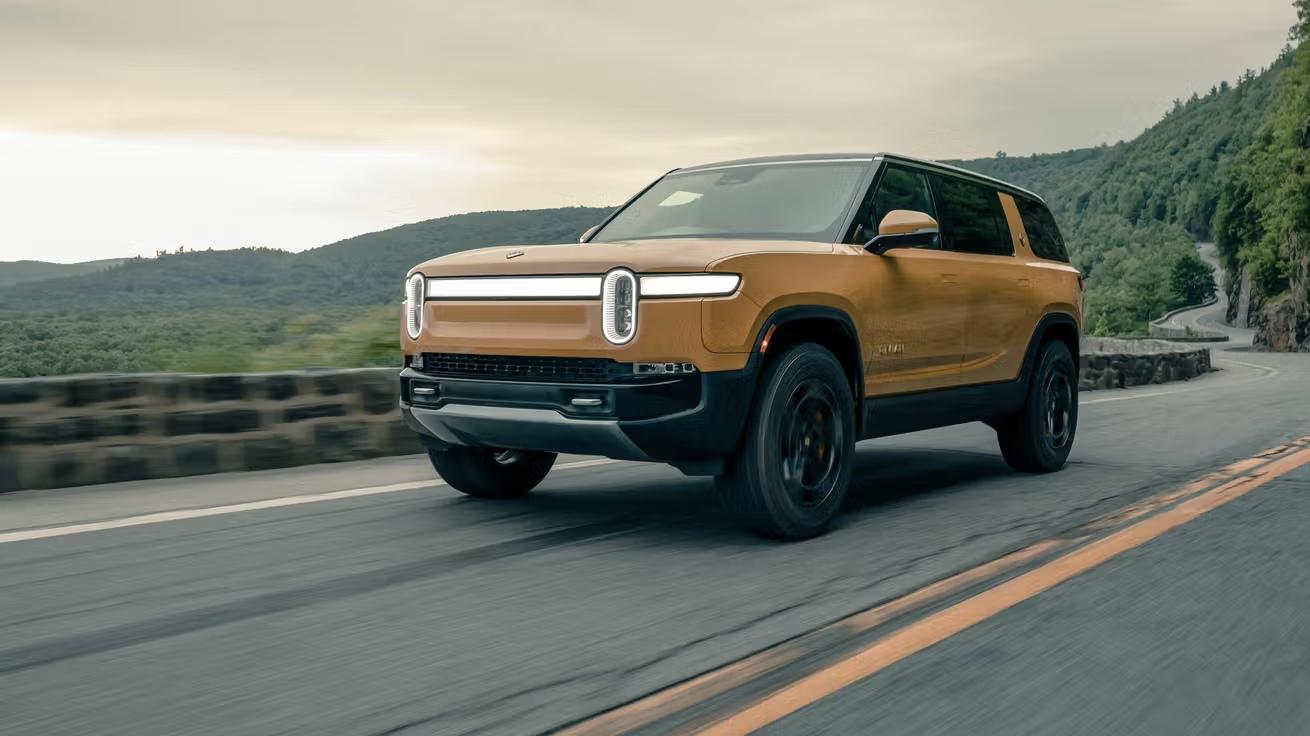
Rivian’s innovative “Gear Tunnel” storage compartment runs the width of the vehicle between the cabin and rear cargo area, providing approximately 11.1 cubic feet of additional storage.
This unique space, accessible from both sides of the vehicle, proves invaluable for storing items like camping chairs, sports equipment, or recovery gear that need to remain accessible but separate from passenger areas.
The Gear Tunnel includes its power outlets and can be configured with various organizational systems. Interior cabin storage throughout the R1S emphasizes outdoor activity compatibility. Center console storage includes dry storage areas and charging capabilities for multiple devices.
Door panels feature substantial storage areas designed for water bottles, snacks, and outdoor gear. The dashboard incorporates numerous storage solutions sized for navigation devices, emergency supplies, and personal items.
Advanced packaging techniques allow the R1S to achieve maximum storage while maintaining three-row seating capability and impressive towing capacity up to 7,700 pounds.
The vehicle’s quad-motor configuration provides exceptional capability without compromising interior space, as the motors integrate efficiently into the wheel hubs and don’t require intrusive mechanical components.
The R1S’s storage solutions extend to exterior applications with available roof rack systems, bed-mounted storage solutions, and trailer connectivity that maintains the vehicle’s storage advantages while expanding hauling capability.
These systems integrate with the vehicle’s electrical architecture to provide power for external equipment and maintain vehicle efficiency during loaded operation.
Climate control systems throughout all cargo areas ensure transported items remain at appropriate temperatures, while advanced drainage systems prevent water accumulation during outdoor activities.
The R1S represents a holistic approach to electric vehicle storage that considers not just volume but also environmental protection, accessibility, and multi-purpose functionality.
5 Bare-Bones Electric Vehicles
These design-focused electric vehicles prioritize clean, uncluttered aesthetics over practical storage solutions, resulting in cabins that offer minimal space for everyday items and personal belongings.
EVs incorporate some of the most minimalist designs, but these five cars execute it in the best way we can think of. Their ultra-modern interiors eliminate traditional storage compartments in favor of streamlined surfaces and digital interfaces, leaving occupants with few options for organizing personal items during daily use.
The emphasis on visual simplicity means these vehicles often lack conventional glove boxes, door storage pockets, or center console compartments that drivers typically rely on for phone storage, sunglasses, or documents.
While these minimalist designs create a striking visual impact and emphasize the futuristic nature of electric mobility, they can prove frustrating for practical daily use, where storage convenience becomes a priority.
The trade-off between aesthetic purity and functional storage creates cabins that look spectacular in showrooms but may disappoint drivers who need practical solutions for everyday items and travel essentials.
1. Slate Auto Electric Truck – Minimalism Redefined
The truck is as bare-bones as it gets, lacking even a radio, speaker system, or touchscreen. Its body panels are molded plastic, its range is a middling 150 miles, its wheels are basic steelies, and the seats are uninspired fabric.
The Slate Auto Electric Truck represents the ultimate expression of automotive minimalism, prioritizing essential transportation functionality over luxury amenities or technological sophistication.
Priced at approximately $20,000, the Slate truck challenges conventional automotive wisdom by stripping away virtually every non-essential feature.
The vehicle ships in a single spec, a two-door, two-seat electric pickup with manual windows, a basic heater, and steel wheels, demonstrating a back-to-basics approach that prioritizes affordability and simplicity over feature richness.
The vehicle’s design philosophy centers on functional transportation without compromise or apology. Manual window controls eliminate complex electrical systems prone to failure while reducing manufacturing costs.
The absence of power accessories means fewer potential failure points and simplified maintenance requirements. Basic steel wheels with standard tires keep replacement costs minimal while providing adequate performance for the vehicle’s intended use cases.
Interior appointments in the Slate truck embrace utilitarian aesthetics completely. Fabric seats provide basic comfort without premium materials or complex adjustment mechanisms.
The dashboard features analog gauges for essential information like battery level and speed, eliminating touchscreen complexity that adds cost and potential failure points. Climate control consists of a basic heater with manual controls, sufficient for essential comfort without energy-hungry air conditioning systems.
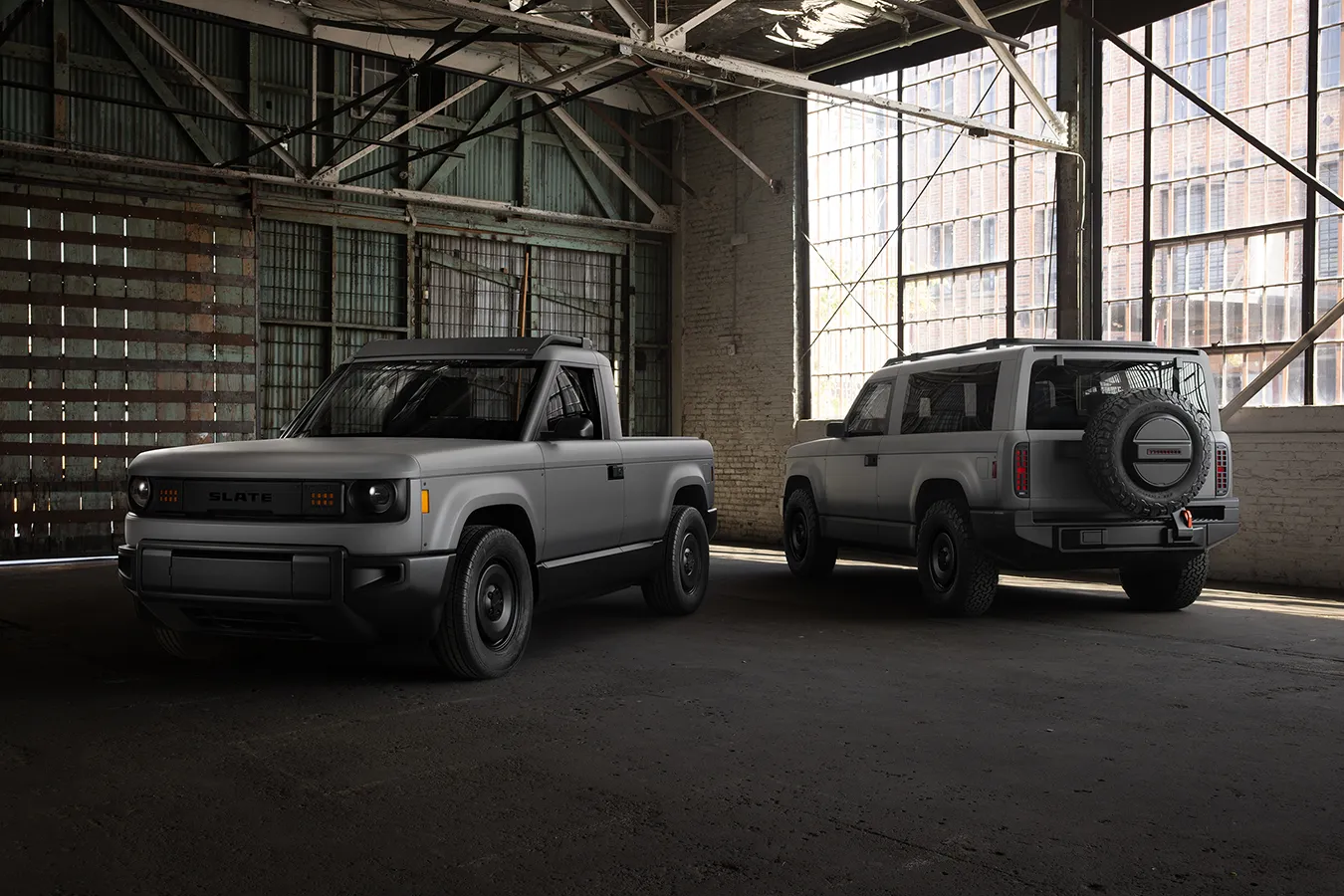
The truck’s 150-mile range reflects realistic usage patterns for urban and suburban driving while keeping battery costs reasonable. This range proves adequate for daily commuting, local delivery applications, and weekend errands without the expense and complexity of extended-range battery systems.
Charging capabilities include standard Level 1 and Level 2 connections, avoiding the cost and complexity of high-speed DC charging systems that most users rarely access.
Body construction utilizes molded plastic panels that reduce manufacturing complexity and repair costs. These panels resist dents and corrosion while providing adequate structural protection.
The plastic construction also reduces vehicle weight, improving efficiency and range while simplifying repair procedures. Color options remain basic, eliminating the cost and complexity of premium paint systems.
The Slate truck’s approach to automotive minimalism extends to its business model, which emphasizes direct sales and simplified dealer relationships.
This approach reduces distribution costs while providing transparent pricing without hidden fees or complex option packages. Customers know exactly what they’re purchasing without surprise additions or dealer markups.
Maintenance requirements for the Slate truck remain minimal due to the absence of complex systems. Electric drivetrain simplicity eliminates oil changes, tune-ups, and most traditional maintenance requirements.
The basic systems that do require service use standard components available from multiple suppliers, keeping long-term ownership costs predictable and affordable.
The vehicle’s target market includes urban delivery services, rural utility applications, and budget-conscious consumers seeking basic electric transportation.
Fleet operators particularly appreciate the simplified maintenance requirements and predictable operating costs. The truck’s basic nature becomes an advantage in commercial applications where reliability and cost control outweigh luxury amenities.
2. Kia Soul EV Base Model – Korean Efficiency Meets Essential Function
The Kia Soul EV in its base trim configuration represents Korean automotive efficiency applied to essential electric transportation. The Kia Soul EV has a maximum of cargo space competitive within its class while maintaining a focus on essential functionality over premium features.
This approach creates an electric vehicle that provides necessary transportation without unnecessary complexity or cost. Kia’s approach to the base Soul EV emphasizes practical transportation solutions for urban and suburban environments.
The vehicle’s boxy proportions maximize interior space efficiency while maintaining compact external dimensions suitable for city parking and maneuvering. Basic exterior trim eliminates chrome accents and complex lighting systems in favor of simple, functional designs that reduce manufacturing costs.
Interior appointments in the base Soul EV focus on durability and functionality rather than luxury presentation. Cloth seating provides adequate comfort with easy cleaning properties suitable for daily use.
Manual seat adjustments eliminate complex power mechanisms while providing sufficient positioning range for most drivers. Basic interior trim uses durable plastics throughout, prioritizing longevity over premium aesthetics.
The dashboard configuration emphasizes essential information display through conventional gauges and simple controls. A basic infotainment system provides radio functionality and Bluetooth connectivity without touchscreen complexity or advanced features.
Climate control operates through manual controls that provide adequate comfort without automatic systems that add cost and complexity. Kia’s approach to electrical systems in the base Soul EV includes essential safety features while eliminating convenience items that add cost.
Power windows and door locks provide basic convenience while avoiding manual alternatives that consumers find unacceptable in modern vehicles. However, features like power seats, premium audio systems, and advanced driver assistance systems remain unavailable in the base configuration.
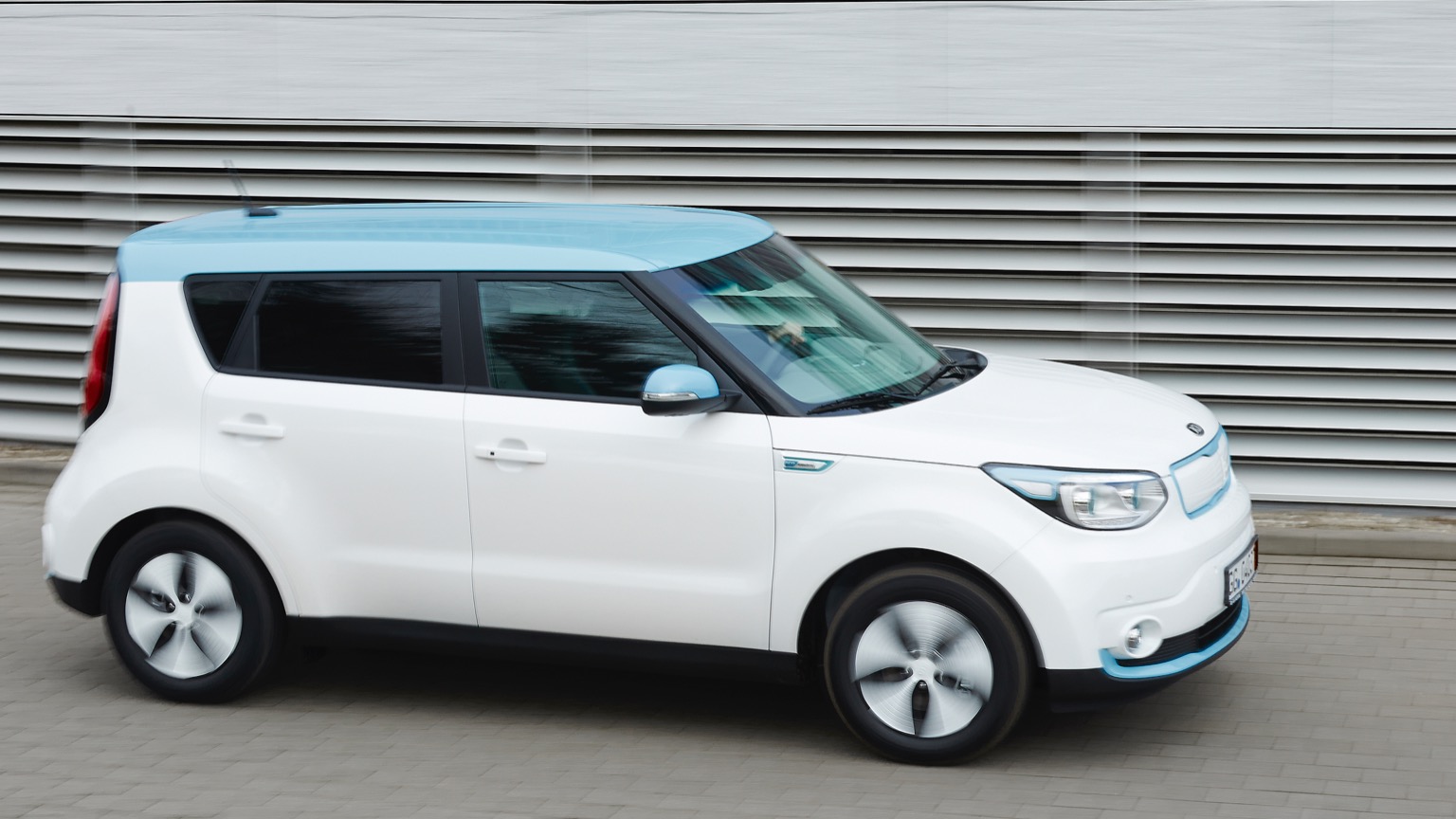
The Soul EV’s electric drivetrain provides adequate performance for urban driving without sport-oriented features or extended-range capabilities. Battery capacity balances range requirements with cost considerations, providing sufficient driving distance for typical daily use patterns.
Charging capabilities include standard connectors without high-speed options that most owners rarely utilize. Exterior design elements focus on functional aerodynamics and manufacturing efficiency rather than styling complexity.
Basic paint options keep costs reasonable while providing adequate protection and appearance. Wheel options remain limited to steel wheels with plastic covers, eliminating alloy wheel costs while maintaining acceptable appearance and performance.
Safety equipment in the base Soul EV includes essential systems required by regulations while avoiding advanced features that add significant cost. Basic airbag systems, stability control, and essential lighting provide adequate protection without complex sensor arrays or advanced intervention systems.
This approach maintains safety standards while controlling costs for budget-conscious buyers. Kia’s warranty coverage for the Soul EV provides confidence in long-term ownership without premium service packages or extended coverage options.
Basic maintenance requirements remain minimal due to electric drivetrain simplicity, while standard service intervals keep ownership costs predictable. Parts availability through Kia’s dealer network ensures long-term support without specialty component concerns.
The base Soul EV serves urban professionals, students, and budget-conscious families seeking reliable electric transportation without premium features. Its practical approach to electric mobility provides environmental benefits without the cost penalties associated with luxury electric vehicles, making sustainable transportation accessible to broader market segments.
3. Chevrolet Bolt EV Base Model – American Accessibility Through Simplicity
The small electric car with the most maximum cargo space (when all seats are folded) is the Chevrolet Bolt EV with 57 cubic feet of volume, demonstrating how American automotive efficiency can create practical electric transportation without premium pricing or complex features.
The base Bolt EV represents General Motors’ commitment to accessible electric mobility through functional design and essential features. Chevrolet’s approach to the base Bolt EV emphasizes value-oriented electric transportation that provides necessary features without luxury appointments.
The vehicle’s compact proportions maximize interior efficiency while maintaining external dimensions suitable for urban parking and suburban driveways.
Basic exterior trim eliminates complex lighting systems and premium accents in favor of functional designs that control manufacturing costs. Interior design in the base Bolt EV focuses on essential comfort and functionality rather than premium materials or complex systems.
Cloth seating provides adequate support with easy maintenance properties suitable for daily family use. Manual seat adjustments eliminate power mechanisms while providing sufficient range for most drivers. Interior trim throughout uses durable materials that prioritize longevity over luxury appearance.
The Bolt EV’s dashboard configuration emphasizes clear information display through straightforward gauges and essential controls. A basic infotainment system provides radio, USB connectivity, and smartphone integration without touchscreen complexity or premium audio systems. Climate control operates through manual systems that provide adequate comfort without automatic features that add cost and complexity.
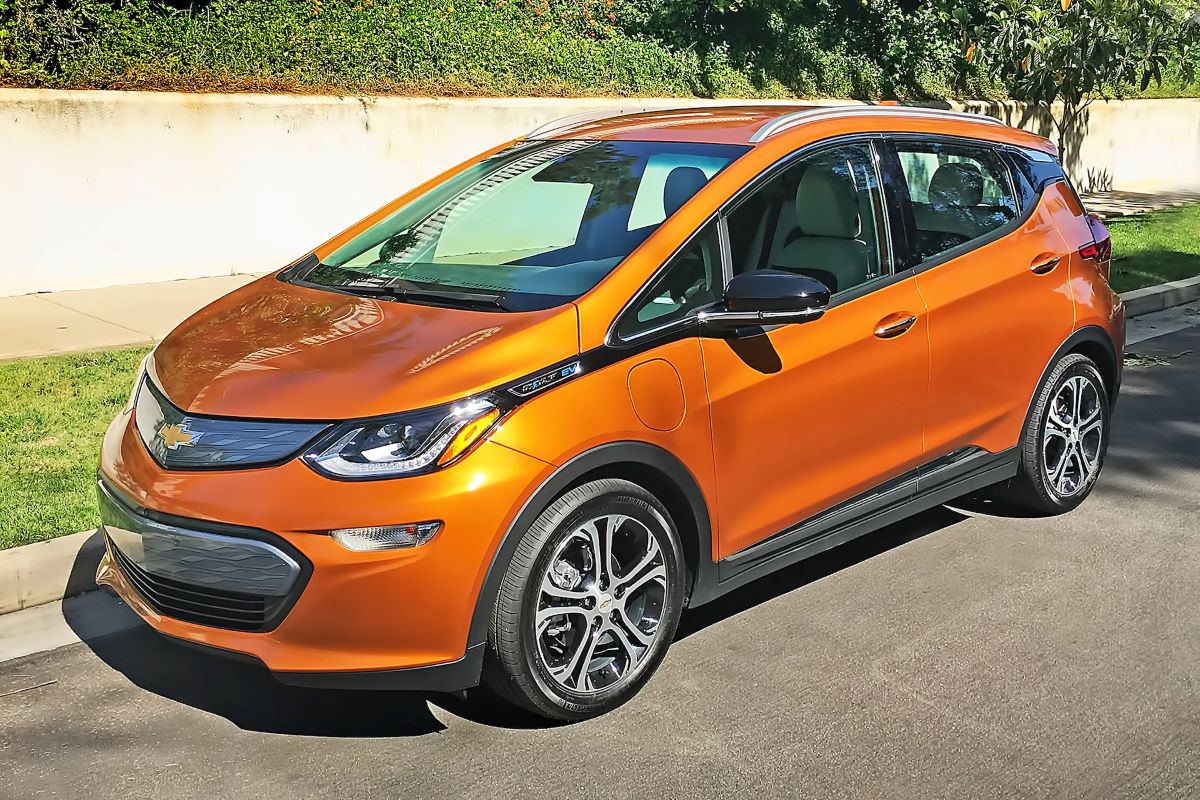
General Motors’ approach to electrical systems in the base Bolt EV includes essential convenience features while eliminating premium items. Power windows and door locks provide expected modern convenience without manual alternatives that consumers reject.
However, features like heated seats, premium lighting, and advanced comfort systems remain unavailable in the base trim configuration. The Bolt EV’s electric powertrain provides adequate performance for daily driving without sport-oriented features or maximum-range configurations.
Battery capacity balances range requirements with cost considerations, offering sufficient driving distance for typical usage patterns. Charging capabilities include standard Level 1 and Level 2 connections without high-speed DC charging that adds significant cost.
Exterior design elements focus on aerodynamic efficiency and manufacturing simplicity rather than styling complexity. Basic paint options provide adequate protection and appearance while controlling costs.
Wheel options remain limited to basic steel wheels with covers, eliminating alloy wheel expenses while maintaining acceptable performance and appearance standards.
Safety equipment in the base Bolt EV includes systems required by federal regulations while avoiding advanced features that significantly increase costs.
Essential airbag systems, electronic stability control, and required lighting provide adequate protection without complex sensor arrays or intervention systems that add premium pricing.
Chevrolet’s service network provides accessible maintenance and support for Bolt EV owners without specialty requirements or premium service packages.
Basic maintenance needs remain minimal due to electric drivetrain simplicity, while standard service procedures keep ownership costs predictable. Parts availability through General Motors’ extensive dealer network ensures long-term support accessibility.
The base Bolt EV serves budget-conscious families, urban commuters, and first-time electric vehicle buyers seeking practical electric transportation without premium costs.
Its approach to electric mobility provides environmental benefits while maintaining affordability, which makes sustainable transportation accessible to mainstream American consumers.
4. Nissan Leaf S Base Trim – Pioneer Simplicity Refined
The Nissan Leaf S base trim represents the refined evolution of one of the world’s first mass-market electric vehicles, demonstrating how experience and maturity can create essential electric transportation without unnecessary complexity.
As the pioneer of affordable electric mobility, Nissan has developed the Leaf into a focused transportation solution that emphasizes reliability and functionality over premium features.
Nissan’s decade-plus experience with electric vehicle production shows in the base Leaf’s refined approach to essential functionality. The vehicle’s exterior design prioritizes aerodynamic efficiency and manufacturing simplicity while maintaining the distinctive appearance that makes it recognizable as an electric vehicle.
Basic trim elements eliminate chrome accents and complex lighting systems in favor of functional designs that control costs while providing adequate visual appeal.
Interior appointments in the base Leaf S focus on practical comfort and durability rather than luxury presentation. Cloth seating provides sufficient support with cleaning properties suitable for family use.
Manual seat adjustments eliminate power mechanisms while offering adequate positioning range for most users. Interior materials throughout emphasize longevity and maintenance ease over premium aesthetics.
The dashboard layout in the base Leaf reflects Nissan’s experience with electric vehicle interface design, providing a clear information display through conventional gauges and straightforward controls.
Basic infotainment functionality includes radio and USB connectivity without touchscreen complexity or advanced integration features. Climate control operates through manual systems that provide necessary comfort without automatic features that add cost.
Nissan’s approach to electrical systems in the base Leaf includes essential modern conveniences while eliminating premium features. Power windows, door locks, and basic interior lighting provide expected functionality without luxury appointments.
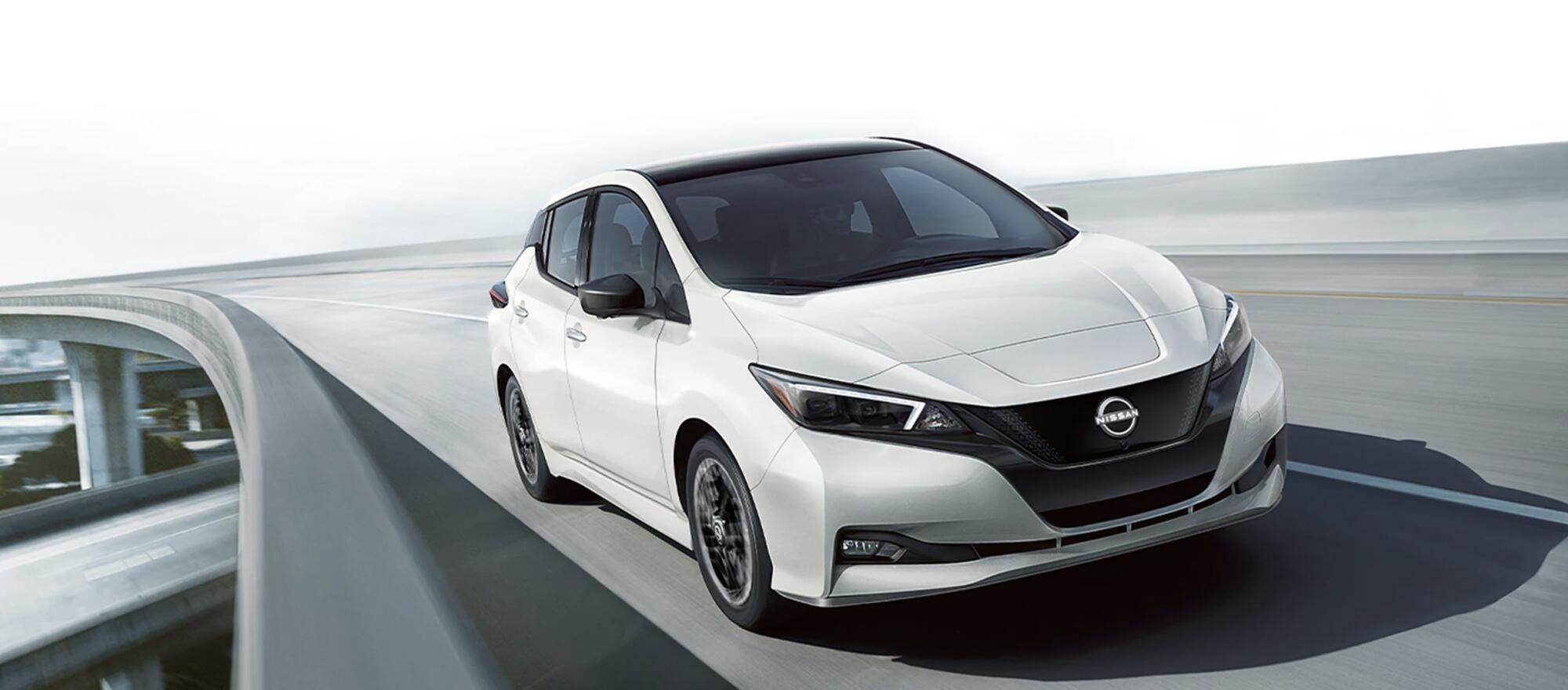
Advanced features like heated seats, premium audio systems, and complex driver assistance technologies remain unavailable in the base configuration. The Leaf’s electric drivetrain benefits from Nissan’s extensive development experience, providing reliable performance adequate for daily driving without sport-oriented features.
Battery technology incorporates lessons learned from earlier generations while balancing capacity with cost considerations. Charging capabilities include standard connections suitable for home and public charging without high-speed options that add significant expense.
Exterior design elements focus on proven aerodynamic principles and manufacturing efficiency rather than cutting-edge styling. Basic paint options provide adequate protection and appearance while controlling costs.
Wheel selections remain limited to practical options that balance cost, efficiency, and acceptable appearance without premium alternatives. Safety equipment in the base Leaf S includes essential systems refined through years of production experience.
Standard airbag configurations, stability control systems, and lighting provide adequate protection based on proven designs. Advanced safety features that add significant cost remain unavailable, but essential protection meets all regulatory requirements.
Nissan’s global service network provides established support for Leaf owners through experienced technicians and readily available parts. Maintenance requirements remain minimal due to electric drivetrain maturity, while established service procedures keep ownership costs predictable.
Long-term parts availability benefits from Nissan’s commitment to the platform and extensive production history. The base Leaf S serves practical consumers seeking proven electric transportation without experimental features or premium costs.
Its mature approach to electric mobility provides environmental benefits through a vehicle refined by extensive real-world experience, making it suitable for conservative buyers seeking established electric vehicle technology.
5. Mitsubishi i-MiEV Legacy Model – Ultra-Minimalist Urban Solution
The Mitsubishi i-MiEV, while no longer in production in most markets, represents the ultimate expression of ultra-minimalist electric vehicle design.
This tiny urban runabout demonstrates how extreme simplification can create functional electric transportation at minimal cost, serving as a benchmark for bare-bones electric mobility.
Mitsubishi’s approach to the i-MiEV emphasized absolute minimalism in every aspect of vehicle design and functionality. The vehicle’s diminutive proportions maximize efficiency while providing basic transportation for urban environments where parking space and maneuverability take priority over comfort or cargo capacity.
External dimensions rival those of city cars while providing adequate interior space for two adults and minimal cargo. Interior design in the i-MiEV reduces appointments to absolute essentials, with basic seating, minimal storage, and controls limited to necessary functions.
The dashboard provides only essential information through simple displays, while climate control consists of basic heating without air conditioning in the most minimal configurations. Materials throughout prioritize functionality and cost control over aesthetics or comfort.
The i-MiEV’s electric drivetrain represents simplicity taken to extremes, with a small battery pack providing limited range suitable only for urban use.
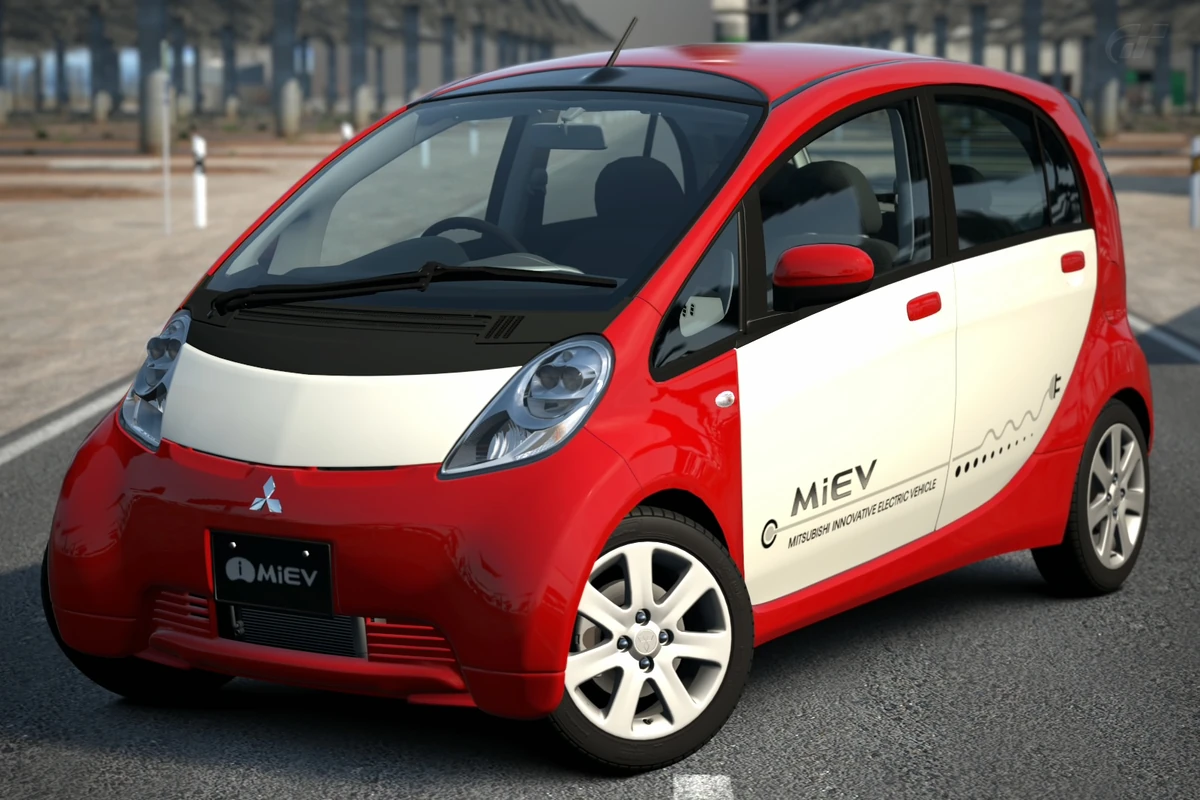
Charging capabilities remain basic, requiring extended charging times that make the vehicle suitable only for users with predictable daily patterns and reliable home charging access. Performance remains minimal but adequate for city driving at moderate speeds.
Safety equipment in the i-MiEV includes only essential systems required by regulations, with basic airbag configurations and minimal electronic intervention systems.
The vehicle’s lightweight and low speeds make it suitable primarily for urban environments with lower-speed traffic patterns. Advanced safety features remain unavailable due to cost constraints and design priorities.
Despite its limitations, the i-MiEV demonstrated the viability of ultra-basic electric transportation for specific use cases. Urban delivery services, campus transportation, and budget-conscious city dwellers found the vehicle’s minimal approach suitable for limited-range applications where cost control takes priority over comfort or capability.
The i-MiEV’s legacy influences current bare-bones electric vehicle development by proving that extremely simplified designs can provide functional transportation while achieving minimal costs.
While no longer widely available, its approach continues to inspire manufacturers developing budget-oriented electric vehicles for emerging markets and specific use applications where simplicity and cost control remain paramount considerations.
Also Read: 5 Trucks With Best Sway-control Towing And 5 That Wander

